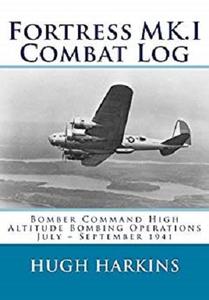Fortress MK.I Combat Log: Bomber Command High Altitude Bombing Operations by Hugh Harkins
English | September 23, 2014 | ASIN: B00NVPAVBY | 75 pages | AZW3 | 1.64 MB
English | September 23, 2014 | ASIN: B00NVPAVBY | 75 pages | AZW3 | 1.64 MB
B-17C - Fortress MK.I
The purpose of this volume is to provide a comprehensive detailed study of the operational and combat operations of the RAF’s Boeing Fortress MK.I (B-17C) long-range bombers which conducted a high altitude daylight bombing campaign over North West Europe and Norway during July, August and September 1941.
The volume covers Bomber Commands operational situation leading up to summer 1941 and details the early model Boeing B-17’s including the B-17C, 20 of which were transferred to the RAF as Fortress MK.I bombers. The formation of No.90 Squadron RAF and the training and preparations for operations, including the transfer of USAAC ground and air crew which continued to operate with 90 Squadron throughout the bombing campaign. Although no USAAC personnel flew operational missions, the Corp suffered one of the Squadrons earliest casualties in a non-operational Fortress loss, and a gentleman from the American Sperry Bomb Sight Company flew one operational mission as bomb aimer.
The bombing campaign is described in detail with every operational sortie detailed, including targets, aircraft flown, weapons dropped, aircrew, and combats with German fighters; a number of Fortress I’s being shot down.
A brief description of the genesis and development of the B-17 is laid down, but the volume is not intended to be a comprehensive monograph on that subject. The volume is copiously supported by a wealth of operational documents including Squadron Narratives and Squadron and Group Combat Reports, many of which are reproduced verbatim. Operational documents have been tied up against German records whenever possible.



